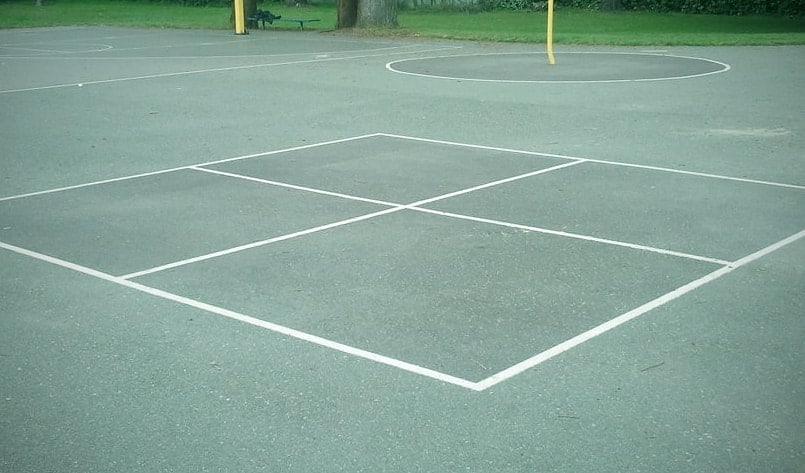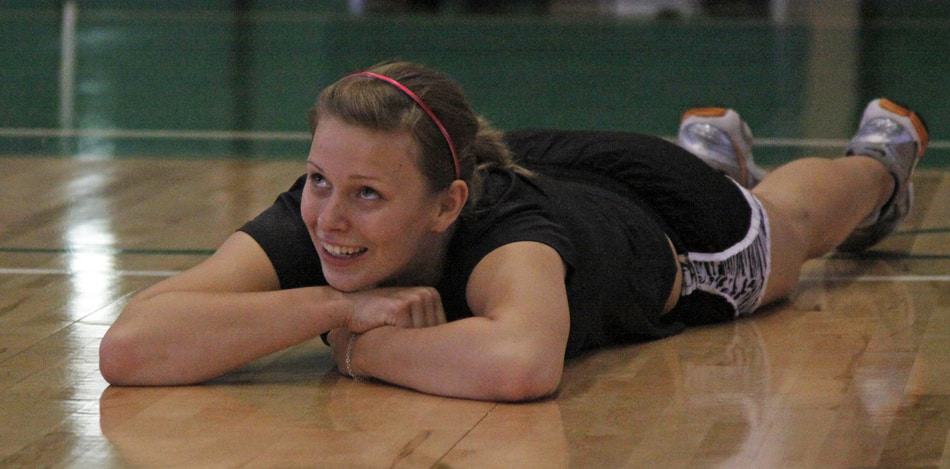As the youth of today’s generation becomes less and less familiar with a variety of sports, it’s a growing challenge to teach specific skills. Coaches and physical education teachers have to find creative ways to teach fundamental athletic skills so that young students can become interested and possibly find sports they are passionate about.
The key to teaching volleyball skills in a general physical education setting is to create and use games that use some of the same movements and skills without having such a high barrier to success as a traditional game of volleyball.
This article will be a collection of different games that can be a starting point for coaches, teachers, and parents to use with their young athletes. Get creative and modify depending on age and overall ability level.
Small-Sided Net Games
Recommended for Elementary School Ages

Set up for this by creating a “small net” barrier down the middle of the playing area – this can be all the way down your gym. If the gym is wide enough you could even have two such nets with play areas on each side. Use short benches about knee-high (or something similar) and then lay gym mats over them to form a triangle net.
Have young athletes partner up with an opponent who will stand on the opposite side. Each pair will need a ball. This can be a tennis ball or a softball-sized bouncy ball to begin so that it’s easy to manage. Coaches will need to point out boundaries.
The first player lobs the ball across into their opponent’s space and the second player has one bounce before they have to catch it. Each player is allowed to catch and then lobs the ball underhanded, back to their opponent’s court.
A variety of balls may be used to challenge students and change the level of challenge. When students become proficient, have them group up into teams of 2.
Coaches should focus on having the youth move their feet and become aware of spacing. They should be thinking about where to move while they don’t have the ball.
Two-Player Catch
Recommended for Elementary School Ages
Have players line up with a partner on the opposite side of a regular volleyball net. Using a regular volleyball, have the players toss the ball with both hands, underhand to their partner.
They should catch the ball with both hands before it lands on the ground and then return it with both hands as well. They should work as partners, trying to control the ball and making good passes.
The idea is to teach this before progressing to using an underarm volleyball pass (or “bump”), which will let younger players learn to move to the ball and plan how to aim their pass to their partner.
Volley Four Square
Recommended for Elementary and Middle School Ages
Using the traditional Four Square game as a basis, we make a few modifications to teach the skills of volleyball. Use a volleyball on a normal Four Square grid. The focus of this game is about learning to control the ball together with the other players, NOT to try to knock each other out.

The first player in the King square will start the play with an easy lob into someone else’s square. Players will let the ball bounce inside their square before playing the ball. Begin by teaching a volleyball underarm pass, what’s often called a “bump”.
Whenever a mistake is made and a player doesn’t bump the ball into another player’s square, they must leave their square and all the players rotate upward through the squares to fill the open space.
If players seem focused on knocking each other out, the coach may encourage them to work together as a team and see how many hits they can make without an error, keeping the ball in control.
When players a proficient at playing consistently with bumping, volleys may be added. Once volleying is allowed, letting the ball bounce in the square first may be ignored to encourage more volleying.
Bound Ball
Recommended for Middle School or High School Ages
Bound Ball is a game that’s played on a full regular-sized volleyball court. A major difference is that there won’t be a net involved. Instead, the centerline of the court will act as the “net.”
Teams are divided up by splitting the group in half with no more than 9 players per side of the court. Since there is no net, players will simply be trying to send the ball to the opposing side to land somewhere within their court.
Before anyone touches the ball, it has to bounce. Before the server hits the ball, they have to let it bounce. When it crosses into your court, you have to let it bounce before bumping, volleying or spiking.
Coaches should encourage using good fundamental techniques similar to volleyball serves, passes, volleys, and spikes. Serving may be moved closer to the centerline for younger players or players may use more of a throwing motion instead of a hit if needed.
Organizers may choose a different ball depending on the skill level. Try deflating a volleyball just a little to give the game a slower pace. Also, consider grouping players with similar skill levels to encourage competitive play.
Dead Fish
Recommended for any group where players can serve over the net.
The popularity of this game always surprised me because it’s so simple!
Have the majority of the players lay on the floor on one side of the net and just a handful of players on the opposite side, ready to serve.

Servers will go one-by-one and serve in a controlled way, trying to hit one of the “fish” on the other side of the net. When they do, they switch with that player.
Regardless of the age of the players, the challenge of this game is of course to be an accurate server. Some high school volleyball coaches will use a simple game like this as a reward after a long hard practice because while it’s sometimes silly, you can still work on the important skill of placing your serves in the correct spot.
Photo credits:
Feature image by Igor Spasic on flickr.com: https://creativecommons.org/licenses/by/2.0/, cropped to zoom.
Four square court image by George Kelly on flickr.com: https://creativecommons.org/licenses/by-nd/2.0/, cropped to zoom.
Blue player image by VAINER MARCHI from Pixabay
Player laying down image by thepanamerican on flickr.com: https://creativecommons.org/licenses/by-nd/2.0/, cropped.
Recent Posts
Athletes, listen up! Do you have a closet full of old jerseys, sweatpants, and tees that you just can't seem to part with? Well, dust them off, because you're sitting on a goldmine of fashion...
You may have heard, or you may have noticed, that there's been a change to the rule about double contact in volleyball. In 2022, an experimental rule change began to be implemented, where the double...
